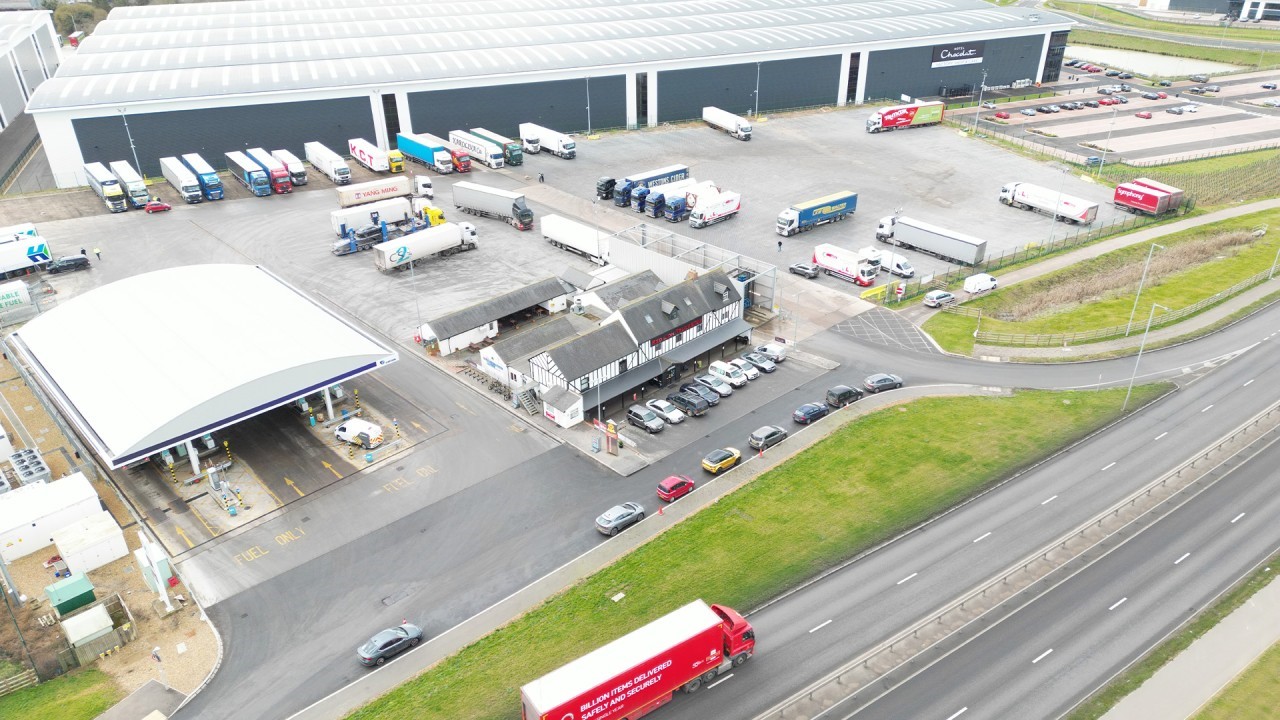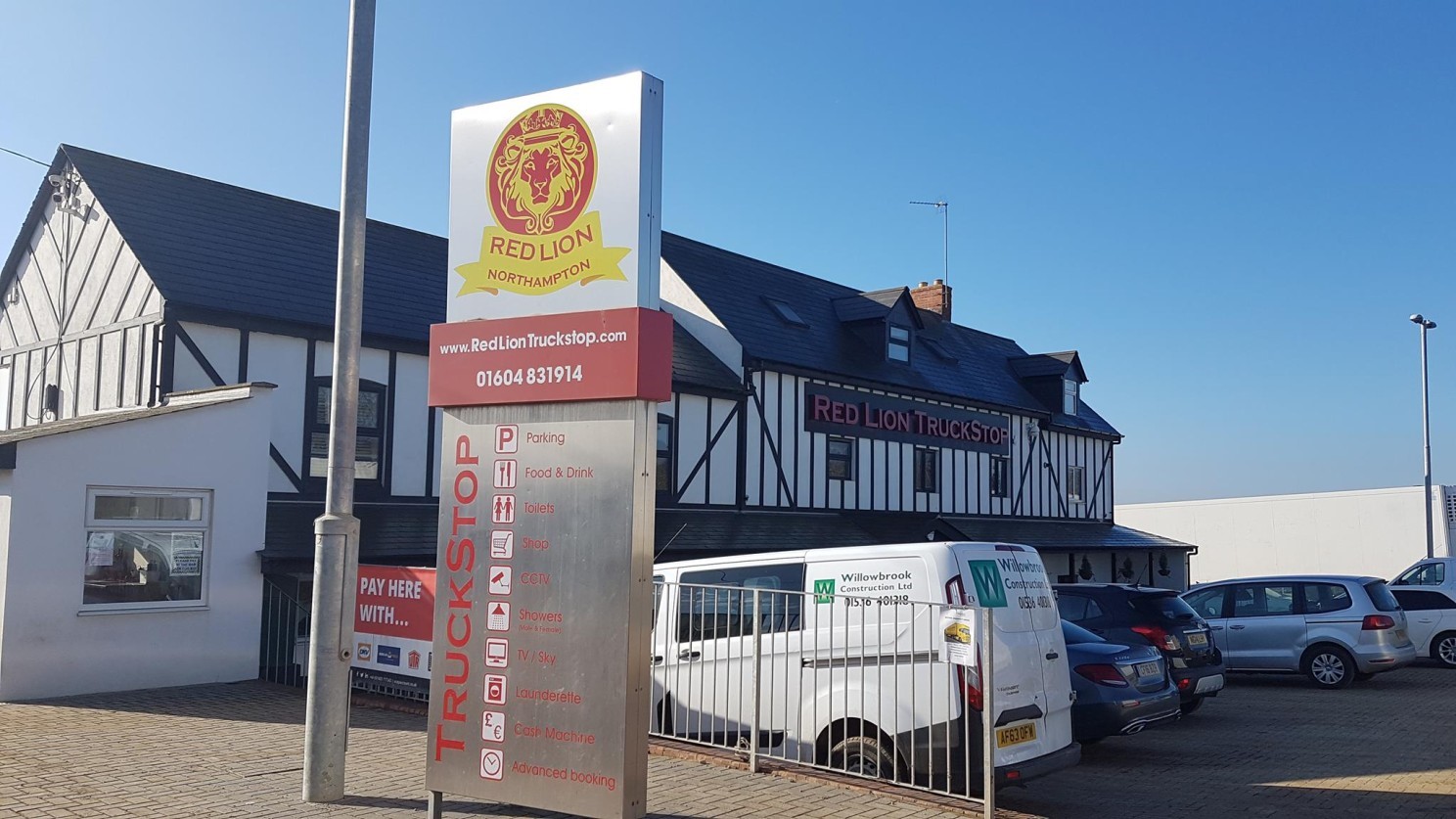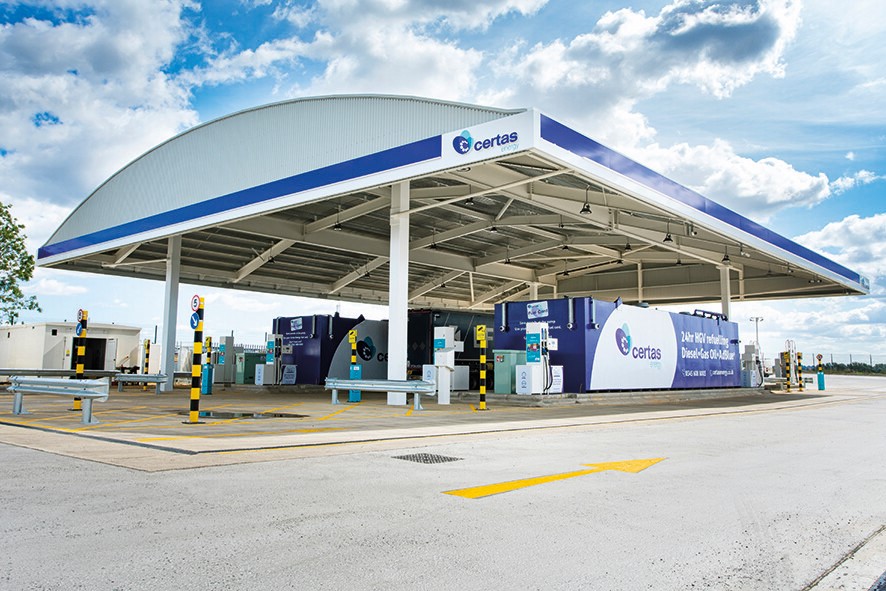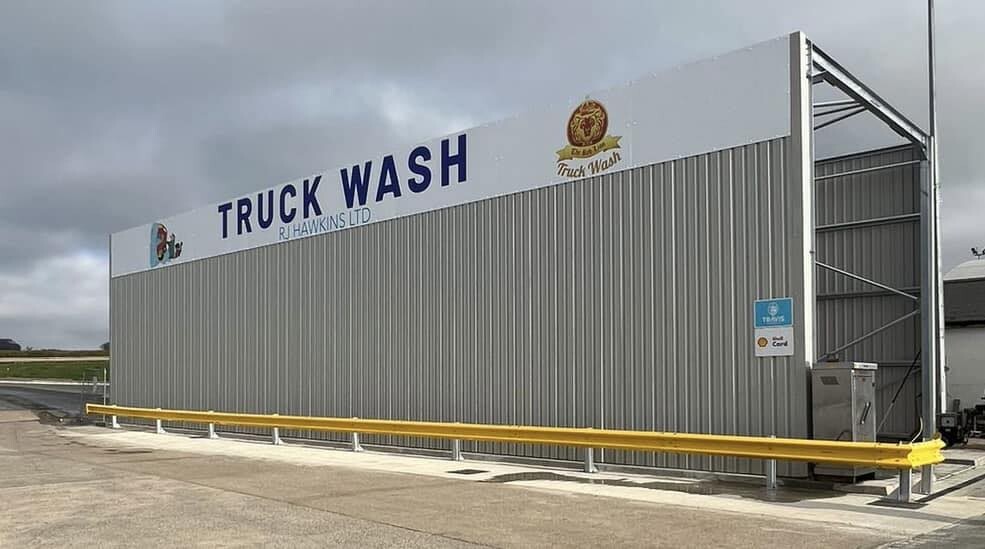
Susie Jones
Postajališče Red Lion Truckstop - model uspeha
Ustvarjeno: 28. 08. 2024
•
Posodobljeno: 28. 08. 2024
Le 200 metrov od avtoceste M1 na križišču 16 je postajališče za tovornjake Red Lion. Ustanovljeno je bilo pred več kot 30 leti in je postalo priljubljena destinacija za voznike. To večkrat nagrajeno postajališče, ki ga opisujejo kot raj za tovornjakarje, je zaradi skupnega vzdušja, okusne hrane in bogate ponudbe zelo priljubljeno. Upravljavec objekta Ali Sadrudin nam je povedal o objektu.
"Na lokaciji je mogoče sprejeti več kot 200 tovornjakov na noč. Na voljo je hitra polnilnica goriva, ki poleg dizelskega goriva in AdBlue toči tudi stisnjen zemeljski plin (CNG). Na voljo je tudi na novo zgrajena pralnica za tovornjake s tremi krtačami. V stavbi za družbene dejavnosti so restavracija in bar, trgovina z dodatki za tovornjake, pralnica, igralni center, bankomati, tuši in sanitarije z osebjem ter prostori za funkcije in sestanke."

Objekti
Nekateri menijo, da so postajališča za tovornjake le prostor za počitek voznikov, vendar imajo tudi ključno vlogo pri izboljšanju dobrega počutja voznikov. V podjetju SNAP se zavedamo, da je treba voznikom zagotoviti čiste prostore. Toda kaj še potrebujejo vozniki tovornjakov?
"Menim, da kupci iščejo osnove, vendar pravilno izvedene. Dobro hrano, čiste prostore ter varnost za njihova vozila in tovor. Če lahko to zagotovite, boste imeli zadovoljne in ponavljajoče se stranke," pravi Ali.
Že bežen pogled na Facebookovo stran Red Lion pove, da se vsekakor držijo te mantre, in to je uspešno. Komentarji, kot sta "odlično postajališče za tovornjake, najboljše v državi" in "morda eno najboljših postajališč za tovornjake v Angliji", podpirajo več kot 4 000 pozitivnih ocen na Googlu.
Varnost in zaščita
Vendar pa okusni obroki in čisti prostori niso edine stvari, na katere se Ali z ekipo osredotoča. Zelo resno jemljejo tudi varnost. Leta 2020 je bilo ocenjeno, da je bilo v Združenem kraljestvu več kot 4 000 kaznivih dejanj, povezanih s težkimi tovornimi vozili, tovornim prometom in tovorom, kar je Združenemu kraljestvu povzročilo stroške v višini 250 milijonov funtov. Lokacije, kot je Red Lion, so uvedle varnostne ukrepe, da bi to število zmanjšale.
Ali pravi, da nam je "SNAP pomagal pridobiti certifikat TAPA PSR Level 3". Februarja 2023 je hotel Red Lion prejel nagrado Park Mark Freight Award. Ali nam predstavi, kateri varnostni ukrepi so bili sprejeti za pridobitev te nagrade.
"Spletna stran je varna že po zasnovi. Imamo 24 ur na dan, 7 dni v tednu in 7 dni na teden zaposlene stražarje, ki patruljirajo po lokaciji, tretja oseba pa spremlja videonadzor. Okoli gradbišča imamo trimetrsko neprekinjeno ograjo s fiksnimi kamerami, ki gledajo na vse točke ograje, tako da lahko zaznajo morebitne nepooblaščene vstope ali poškodbe ograjnih panelov. Območje je tudi popolnoma osvetljeno do zahtevane stopnje luksuza, ki jo je določila policija, kamere za zaznavanje gibanja pa so strateško nameščene po celotnem območju, da zaznajo vsako nepooblaščeno gibanje in zagotovijo, da je vsak del območja pod nadzorom. Sistem ANPR za zaznavanje tablic, ki vstopajo na območje in izstopajo z njega, ter opozorilo za hiter odziv policije, če bi jo bilo treba poklicati."
V hotelu Red Lion so sprejeli tudi dodatne ukrepe, da bi se voznice med obiskom počutile udobno in varno. Na voljo so udobja, kot so ženske prhe, stranišča in garderobe. Ti ukrepi niso ostali neopaženi, saj je bilo to postajališče januarja 2023 imenovano za najboljše postajališče za tovornjake v Združenem kraljestvu za voznice tovornih vozil.

Prihodki in širitev
Ena od številnih prednosti za upravitelje lokacij, ki uporabljajo SNAP, je izboljšana dobičkonosnost in optimizacija. Ali kot ustanovna stranka SNAP-a pojasnjuje, kako je SNAP podjetju prinesel dodatne prihodke, odkar se mu je leta 2009 pridružil.
"To je bil postopen proces, ki je potekal več let, vendar se potrošniške navade voznikov nenehno spreminjajo in postajajo brezgotovinske, zato si lahko predstavljam, da bi se novo spletno mesto, ki bi prevzelo SNAP, takoj povrnilo. Približno 65 % vseh prihodkov spletnega mesta je iz sistema SNAP."
Od leta 2009 so se stvari v industriji zagotovo zelo spremenile. Ali pojasnjuje, kako se je moralo spletno mesto prilagoditi spreminjajoči se industriji in povečanemu povpraševanju.
"Na začetku je bilo na lokaciji mogoče sprejeti le 130 tovornih vozil na noč, leta 2018 pa se je lokacija razširila na več kot 200, da bi se prilagodila povečanemu povpraševanju," pravi Ali. Za voznike in vozne parke, ki uporabljajo sistem SNAP, je teh 200 prostorov mogoče enostavno rezervirati.
Štiri leta pozneje se je lokacija še bolj razširila z uvedbo nove pralnice za tovornjake. Novembra 2022 odprta najsodobnejša pralnica za tovornjake s tremi krtačami je primerna za večino vozil LGV.

Pridružite se SNAP-u kot storitveni partner
Z vključitvijo v SNAP se vaša lokacija predstavi 160.000 voznikom in 7.000 voznim parkom. Postajališčem za tovornjake, kot je Red Lion, ki si nenehno prizadevajo ponuditi nove pobude in zmogljivosti za svoje stranke, SNAP ponuja priložnost, da to storijo.
"SNAP je spletnemu mestu omogočil alternativni način plačila, ki lahko kupcem samo koristi in jih pritegne na spletno mesto," pravi Ali.
Prednosti programa SNAP
Račun SNAP uporablja več kot 160.000 voznikov. Zato so visoki standardi ključnega pomena. Čeprav so storitveni partnerji, ki sprejemajo plačila v okviru računa SNAP, neodvisna podjetja, vsako stran pregledamo in zagotovimo, da izpolnjuje naše standarde. Poleg tega je naša omrežna ekipa na voljo, kadar koli je to potrebno.
"Družba SNAP naju je podpirala že od prve včlanitve," pravi Ali.
Na vprašanje, kaj je zanje najboljša stvar pri podjetju SNAP, Ali odgovarja: "To je raven storitev, saj so presegli vse meje in prilagodili sistem izdajanja vozovnic našim zahtevam."
In njegov nasvet lastnikom parkirišč za tovornjake, ki razmišljajo, da bi svojo lokacijo odprli za voznike SNAP?
"Naredi to! Zakaj ne bi želeli na svoje spletno mesto pripeljati dodatnih strank?"
Prijavite se na SNAP
Če želite izboljšati dobičkonosnost in optimizirati delovanje spletnega mesta, obiščite snapacc.com.



